Leonhard Euler is a Swiss mathematician and physicist, one of the founders of pure mathematics. He not only made fundamental and formative contributions to geometry, calculus, mechanics, and number theory, but also developed methods for solving problems in observational astronomy and applied mathematics to engineering and social affairs.
Euler (mathematician): short biography
Leonhard Euler was born on April 15, 1707. He was the firstborn of Paulus Euler and Margaret Brucker. The father came from a modest family of artisans, and the ancestors of Margaret Brooker were a number of famous scientists. Paulus Euler at that time served as a vicar in the church of St. Jacob. Being a theologian, Leonard's father was interested in mathematics, and during the first two years of his studies at the university he attended the courses of the famous Jacob Bernoulli. About a year and a half after the birth of their son, the family moved to Riehen, a suburb of Basel, where Paulus Euler became a pastor in the local parish. There he conscientiously and faithfully served until the end of his days.
The family lived in cramped conditions,especially after the birth of their second child, Anna Maria, in 1708. The couple will have two more children - Mary Magdalene and Johann Heinrich.
Leonard received his first math lessons at home from his father. Around the age of eight, he was sent to a Latin school in Basel where he lived at his maternal grandmother's house. To compensate for the low quality of school education at the time, my father hired a private tutor, a young theologian named Johannes Burckhardt, who was a passionate math lover.
In October 1720, at the age of 13, Leonard entered the Faculty of Philosophy at the University of Basel (a common practice at that time), where he attended introductory classes in elementary mathematics by Johann Bernoulli, the younger brother of Jacob, who had died by that time.
Young Euler took up his studies with such zeal that he soon attracted the attention of a teacher who encouraged him to study more difficult books of his own composition and even offered to help with his studies on Saturdays. In 1723, Leonard completed his education with a master's degree and gave a public lecture in Latin in which he compared Descartes' system with Newton's natural philosophy.
Following the wishes of his parents, he entered the theological faculty, devoting, however, most of the time to mathematics. Ultimately, probably at the urging of Johann Bernoulli, the father accepted for granted his son's destiny to pursue a scientific, rather than a theological career.
At the age of 19, the mathematician Euler dared to compete with the greatest scientists of the time by taking part in a competition to solve the problemParis Academy of Sciences on the optimal placement of ship masts. At that moment, he, who had never seen ships in his life, did not win the first prize, but took the prestigious second place. A year later, when a vacancy appeared in the Department of Physics at the University of Basel, Leonard, with the support of his mentor Johann Bernoulli, decided to compete for a place, but lost because of his age and lack of an impressive list of publications. In a sense, he was lucky, as he was able to accept the invitation of the St. Petersburg Academy of Sciences, founded a few years earlier by Tsar Peter I, where Euler found a more promising field that allowed him to develop to the fullest. The main role in this was played by Bernoulli and his two sons, Niklaus II and Daniel I, who actively worked there.
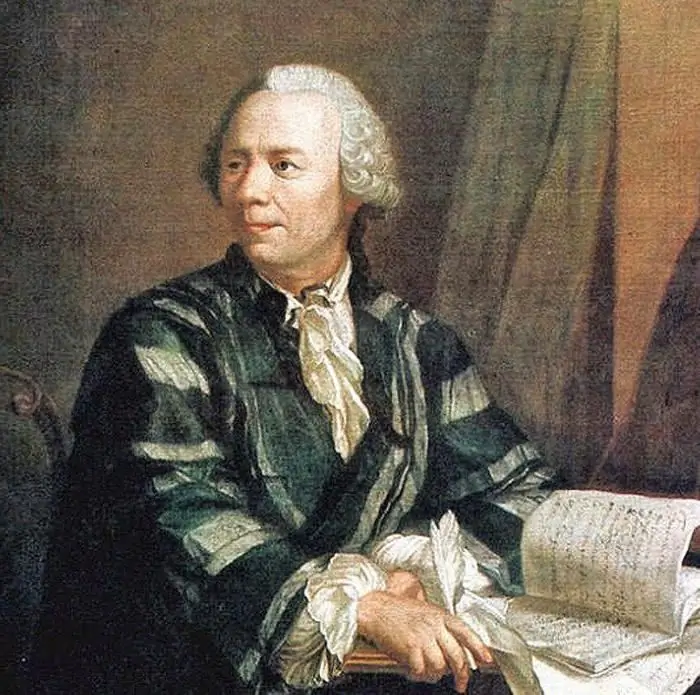
St. Petersburg (1727-1741): rapid rise
Euler spent the winter of 1726 in Basel studying anatomy and physiology in preparation for his expected duties at the academy. When he arrived in St. Petersburg and began working as an adjunct, it became obvious that he should devote himself entirely to the mathematical sciences. In addition, Euler was required to participate in the examinations in the cadet corps and advise the government on various scientific and technical issues.
Leonard easily adapted to the new harsh conditions of life in northern Europe. Unlike most other foreign members of the academy, he immediately began to study the Russian language and quickly mastered it, both in written and oral forms. some timehe lived with Daniel Bernoulli and was a friend of Christian Goldbach, permanent secretary of the academy, famous today for his still unsolved problem, according to which any even number, starting from 4, can be represented by the sum of two prime numbers. The extensive correspondence between them is an important source for the history of science in the 18th century.
Leonhard Euler, whose achievements in mathematics instantly brought him world fame and elevated his status, spent his most fruitful years at the academy.
In January 1734 he married Katharina Gsel, daughter of a Swiss painter who taught with Euler, and they moved into their own house. In marriage, 13 children were born, of which, however, only five reached adulthood. The firstborn, Johann Albrecht, also became a mathematician, and later helped his father in his work.
Euler was not spared adversity. In 1735 he became seriously ill and almost died. To the great relief of all, he recovered, but three years later fell ill again. This time, the disease cost him his right eye, which is clearly seen in all the portraits of the scientist since that time.
The political instability in Russia following the death of Tsaritsa Anna Ivanovna forced Euler to leave St. Petersburg. Moreover, he had an invitation from the Prussian King Frederick II to come to Berlin and help create an academy of sciences there.
In June 1741, Leonard, together with his wife Katharina, 6-year-old Johann Albrecht and one-year-old Karl, left St. Petersburg for Berlin.
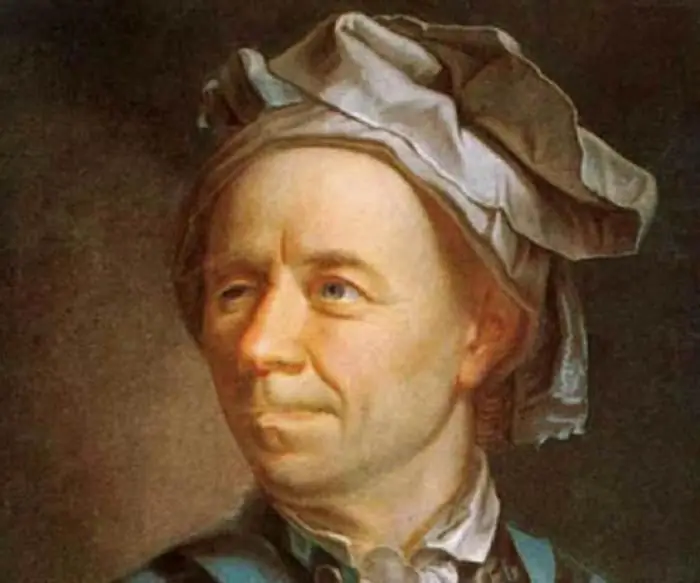
Work in Berlin (1741-1766)
The military campaign in Silesia put aside Frederick II's plans to establish an academy. And only in 1746 it was finally formed. Pierre-Louis Moreau de Maupertuis became president, and Euler took over as director of the mathematics department. But before that, he did not remain idle. Leonard wrote about 20 scientific articles, 5 major treatises, and composed over 200 letters.
Despite the fact that Euler performed many duties - he was responsible for the observatory and botanical gardens, solved personnel and financial issues, was engaged in the sale of almanacs, which constituted the main source of income for the academy, not to mention various technological and engineering projects, his mathematical performance not hurt.
He was also not too distracted by the scandal about the primacy of the discovery of the principle of least action that erupted in the early 1750s, which was claimed by Maupertuis, which was disputed by the Swiss scientist and newly elected academician Johann Samuel Koenig, who spoke of its mention by Leibniz in a letter to the mathematician Jacob Hermann. Koenig came close to accusing Maupertuis of plagiarism. When asked to produce the letter, he was unable to do so, and Euler was assigned to investigate the case. Having no sympathy for the philosophy of Leibniz, he sided with the president and accused Koenig of fraud. The boiling point was reached when Voltaire, who took the side of Koenig, wrote a derogatory satire that ridiculed Maupertuis and did not spare Euler. The president was so upset that he soon left Berlin, and Euler had to manage business, de factoleading the academy.
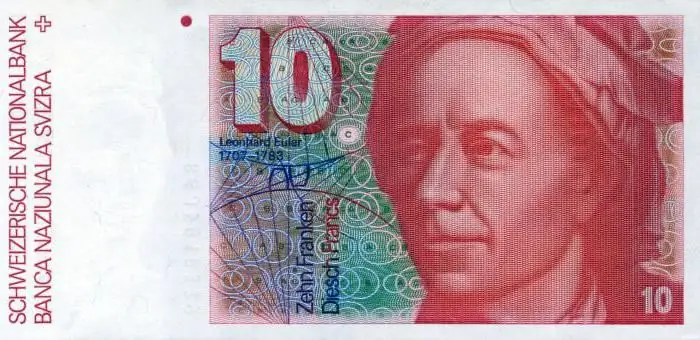
Scientist's family
Leonard became so we althy that he purchased a manor in Charlottenburg, a western suburb of Berlin, large enough to provide comfortable accommodation for his widowed mother, whom he brought to Berlin in 1750, his half-sister and all his children.
In 1754, his first-born Johann Albrecht, on the recommendation of Maupertuis at the age of 20, was also elected a member of the Berlin Academy. In 1762, his work on the perturbations of the orbits of comets by the attraction of the planets received the prize of the St. Petersburg Academy, which he shared with Alexis-Claude Clairaut. Euler's second son, Karl, studied medicine in Halle, and the third, Christoph, became an officer. His daughter Charlotte married a Dutch aristocrat, and her older sister Helena married a Russian officer in 1777.
Tricks of the King
The scientist's relationship with Frederick II was not easy. This was partly due to a noticeable difference in personal and philosophical inclinations: Frederic is a proud, self-confident, elegant and witty interlocutor, sympathetic to the French Enlightenment; mathematician Euler is a modest, inconspicuous, down-to-earth and devout Protestant. Another, perhaps more important, reason was Leonard's resentment that he was never offered the presidency of the Berlin Academy. This resentment only increased after the departure of Maupertuis and Euler's efforts to keep the institution afloat, when Frederick tried to interest Jean Léron d'Alembert in the presidency. The latter actually came to Berlin, but only to inform the king of hisdisinterest and recommend Leonard. Frederick not only ignored d'Alembert's advice, but defiantly declared himself head of the academy. This, along with the king's many other refusals, eventually caused the mathematician Euler's biography to take a sharp turn again.
In 1766, despite obstacles from the monarch, he left Berlin. Leonard accepted the invitation of Empress Catherine II to return to St. Petersburg, where he was solemnly welcomed again.
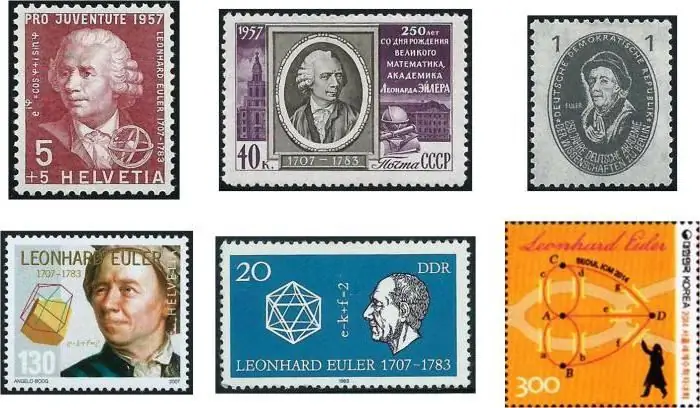
St. Petersburg again (1766-1783)
Highly respected in the academy and adored in Catherine's court, the great mathematician Euler held an extremely prestigious position and wielded influence that had been denied him for so long in Berlin. In fact, he played the role of a spiritual leader, if not the head of the academy. Unfortunately, however, his he alth was not so good. The cataract of the left eye, which began to bother him in Berlin, became more and more serious, and in 1771 Euler decided to have an operation. Its consequence was the formation of an abscess, which almost completely destroyed vision.
Later that year, during a great fire in St. Petersburg, his wooden house burst into flames, and the almost blind Euler managed not to be burned alive only thanks to a heroic rescue by Peter Grimm, artisans from Basel. To alleviate the misfortune, the Empress allocated funds for the construction of a new house.
Another hard blow came to Euler in 1773, when his wife died. After 3 years, not to depend on theirchildren, he married a second time to her half-sister Salome-Aviga Gzel (1723-1794).
Despite all these fateful events, the mathematician L. Euler remained devoted to science. Indeed, about half of his works were published or originated in St. Petersburg. Among them are two of his "bestsellers" - "Letters to a German Princess" and "Algebra". Naturally, he would not have been able to do this without a good secretary and technical assistance provided to him, among others, by Niklaus Fuss, a compatriot from Basel and the future husband of Euler's granddaughter. His son Johann Albrecht also took an active part in the process. The latter also acted as stenographer of the sessions of the academy, over which the scientist, as the oldest full member, was to preside.
Death
The great mathematician Leonhard Euler died of a stroke on September 18, 1783 while playing with his grandson. On the day of his death, formulas were found on two of his large slates describing a balloon flight made on June 5, 1783 in Paris by the Montgolfier brothers. The idea was developed and prepared for publication by his son Johann. This was the last article of the scientist, published in the 1784th volume of Memoires. Leonhard Euler and his contribution to mathematics were so great that the stream of papers awaiting their turn in academic publications was still being published for 50 years after the scientist's death.
Scientific activity in Basel
In a short Basel period, Euler's contributions to mathematics were works on isochronous and reciprocal curves, as well as work for the prize of the Paris Academy. But the main workat this stage became the Dissertatio Physica de sono, filed in support of his nomination for the chair of physics at the University of Basel, on the nature and propagation of sound, in particular on the speed of sound and its generation by musical instruments.
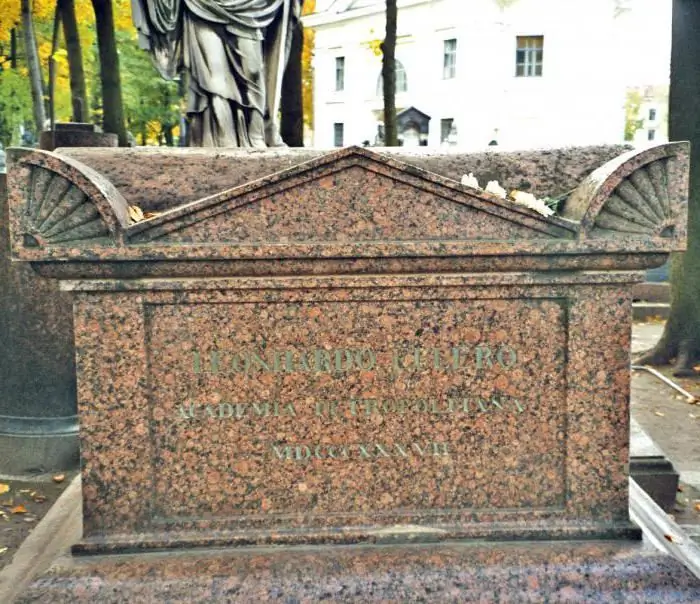
The first St. Petersburg period
Despite the he alth problems that Euler experienced, the scientist's achievements in mathematics cannot but cause surprise. During this time, in addition to his main works on mechanics, music theory, and naval architecture, he wrote 70 articles on a variety of topics, from mathematical analysis and number theory to specific problems in physics, mechanics, and astronomy.
The two-volume "Mechanics" was the beginning of a far-reaching plan for a comprehensive review of all aspects of mechanics, including the mechanics of rigid, flexible and elastic bodies, as well as fluids and celestial mechanics.
As can be seen from Euler's notebooks, back in Basel he thought a lot about music and musical composition and planned to write a book. These plans matured in St. Petersburg and gave rise to Tentamen, published in 1739. The work begins with a discussion of the nature of sound as a vibration of air particles, including its propagation, the physiology of auditory perception, and the generation of sound by string and wind instruments.
The core of the work was the theory of pleasure caused by music, which Euler created by assigning numerical values, degrees, to the interval of tone, chord or their sequence, which make up the “pleasantness” of this musical construction: thanthe lower the degree, the higher the pleasure. The work is done in the context of the author's favorite diatonic chromatic temperament, but also given a complete mathematical theory of temperaments (both ancient and modern). Euler was not the only one who tried to turn music into an exact science: Descartes and Mersenne did the same before him, as did d'Alembert and many others after him.
The two-volume Scientia Navalis is the second stage in his development of rational mechanics. The book outlines the principles of hydrostatics and develops the theory of equilibrium and oscillations of three-dimensional bodies immersed in water. The work contains the beginnings of solid mechanics, which later crystallizes in Theoria Motus corporum solidorum seu rigidorum, the third major treatise on mechanics. In the second volume, the theory is applied to ships, shipbuilding and navigation.
Incredibly, Leonhard Euler, whose achievements in mathematics during this period were impressive, had the time and stamina to write a 300-page work on elementary arithmetic for use in St. Petersburg's gymnasiums. How fortunate were those children who were taught by a great scientist!

Berlin works
In addition to 280 articles, many of which were very important, mathematician Leonhard Euler wrote a number of landmark scientific treatises during this period.
The brachistochrone problem - finding the path along which a point mass moves under the influence of gravity from one point in the vertical plane to another in the shortest possible time - is an early example of a problem created by Johann Bernoulli, according tosearch for a function (or curve) that optimizes an analytic expression that depends on this function. In 1744, and again in 1766, Euler generalized this problem significantly, creating a completely new branch of mathematics - the "calculus of variations".
Two smaller treatises, on the trajectories of planets and comets and on optics, appeared around 1744 and 1746. The latter is of historical interest because it started the discussion about Newtonian particles and Euler's wave theory of light.
In deference to his employer, King Frederick II, Leonard translated an important work on ballistics by the Englishman Benjamin Robins, although he unfairly criticized his Mechanics of 1736. He added, however, so many comments, explanatory notes and corrections, which resulted in the book "Artillery" (1745) being 5 times larger than the original.
In the two-volume Introduction to the Analysis of Infinitesimals (1748), the mathematician Euler positions analysis as an independent discipline, summarizing his numerous discoveries in the field of infinite series, infinite products, and continued fractions. He develops a clear concept of the function of real and complex values and emphasizes the fundamental role in the analysis of the number e, exponential and logarithmic functions. The second volume is devoted to analytic geometry: the theory of algebraic curves and surfaces.
"Differential Calculus" also consists of two parts, the first of which is devoted to the calculus of differences and differentials, and the second - the theory of power series and summing formulas with many examples. Here, by the way,contains the first printed Fourier series.
In the three-volume "Integral Calculus", the mathematician Euler considers quadratures (i.e., infinite iterations) of elementary functions and techniques for reducing linear differential equations to them, describes in detail the theory of second-order linear differential equations.
Throughout the years in Berlin and later, Leonhard was engaged in geometric optics. His articles and books on the subject, including the monumental three-volume Dioptric, made up seven volumes of the Opera Omnia. The central theme of this work was the improvement of optical instruments such as telescopes and microscopes, ways to eliminate chromatic and spherical aberrations through a complex system of lenses and filling fluids.

Euler (mathematician): interesting facts of the second St. Petersburg period
This was the most productive time during which the scientist published more than 400 papers on the topics already mentioned, as well as geometry, probability theory and statistics, cartography, and even pension funds for widows and agriculture. Of these, three treatises can be distinguished on algebra, the theory of the moon and naval science, as well as on number theory, natural philosophy and dioptrics.
Here appeared another of his "bestseller" - "Algebra". The name of the mathematician Euler graced this 500-page work, which was written with the aim of teaching this discipline to an absolute beginner. He dictated a book to a young apprentice, whom he had brought with him from Berlin, and when the work was completed, heunderstood and was able to solve algebraic problems given to him with great ease.
"Second Theory of Courts" was also intended for people who do not have knowledge of mathematics, namely, sailors. Not surprisingly, thanks to the extraordinary didactic skill of the author, the work was very successful. The Minister of the Navy and Finance of France, Anne-Robert Turgot, proposed to King Louis XVI that all students of naval and artillery schools be required to study Euler's treatise. It is very likely that one of those students was Napoleon Bonaparte. The king even paid the mathematician 1,000 rubles for the privilege of republishing the work, and Empress Catherine II, not wanting to give in to the king, doubled the amount, and the great mathematician Leonhard Euler received an additional 2,000 rubles!






